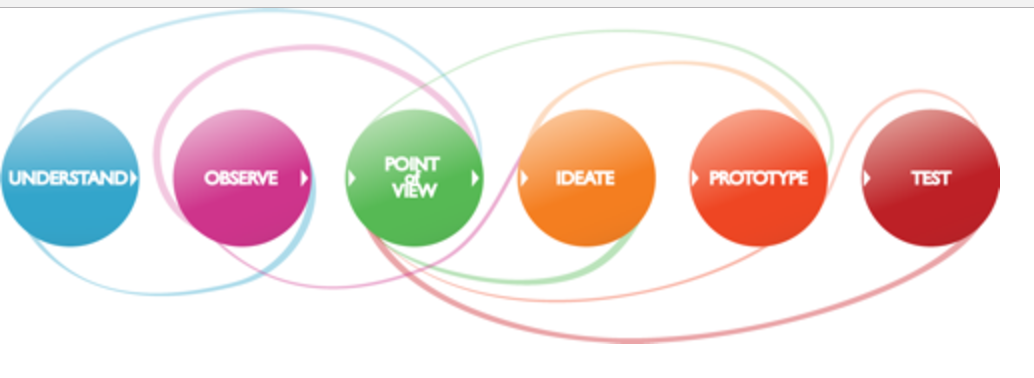What's the Real Question? What's the Need? #DEEPdt
If you have not ventured over to peruse the #dtk12chat feed on twitter lately, man O man are you missing out. Not only have the Wednesday Night Power Hour 9pm EST official chats been bumpin' & sparkin' these last several months, almost hourly people of old & a slew of Newbies are chatting away (btw #dtk12chat is a 24/7 constant twitter chatter around K12+EDU & Design Thinking--- also it is not too rapid of a flow like some other twitter feeds that it are too hard to stay in the know YET) As #dtk12chat continues to attract a varied range of voices in EDU + design thinking spectrum a question keeps popping up... "I want to begin learning and doing design thinking, where can I find some resources?"
This is a great question. It is the question I had way back when I first heard of the concept of design thinking in February of 2010. I spent a lot of time during my spring break researching articles, posts, twitter links, examples, Kim Saxe's work, and of course Stanford's @K12lab wiki site.
Reflecting on this question, "Where can I find some resources?" makes me wonder if that is really the true question being asked...
Let's reframe:
"How can I understand this ambiguous concept called design thinking that by the way has a 1,000s different definitions and approaches?"
"Why do I need to add design thinking into my learning space (the plate runneth over already)?"
"I want to learn design thinking, are twitter chats and reading going to help me? Or do I need more? Should I want more? (btw I have zero access to professional development funds or Admin support)"
"Will someone give me a road map that will take me from A to Z so I don't look like a fool in front of my students?"
"I don't have the time to show the power of design thinking, I have one shot to impress. What do I do?"
"Its great to talk on twitter but what I really need is to watch someone run a DT challenge. How can this be possible?"
"I don't get it. Human-Centered approach? It's about the End User? Isn't that what I do everyday when I create my lesson plans and teach my students?"
"I need resources that show me how to align my curriculum to design thinking. I can't add more projects on top of the existing projects. How do I do this?"
I could go on and on with these reframed questions... Actually, I would love to curate these questions and many more. Here is a newly created "official" #dtk12chat Google Group. Please consider adding your questions.
I wonder if the needs are really "resources?" When I was first starting out I thought it was resources I needed yet after a week of researching in the safe spaces of spring break, Monday morning came very, very quickly and I had to start my first design challenge (a room redesign). Alone. And all I had in my arsenal of resources was the following process via the d.School:
I had never spoken to anyone and my reading of design thinking was adequate at best as I knew it was still pretty surface. This 6 week pilot design challenge in the end was a huge success for many reasons: increased engagement, development of skills that were not being addressed through traditional schooling, movement of learning and doing, self-awareness and initiative, servant leadership, interaction across age groups, connections and opportunities created, etc (these success points were experienced by both students and teachers).
Yet, this 1st challenge was also quite humbling, disastrous, and inspiring all at the same time. It was the blind leading the blind. I had no clue as to what came next after each design session with the students. Long story short, it wasn't resources I needed beyond the process above (of course I didn't this for quite sometime.) What I needed was trust in the process, trust in myself, & time. Design thinking is not smooth and its not easy. It is messy and with that, all the resources in the world will not stop the mess. As my DT journey continued, I knew I needed to create a process that worked for both me & people of ALL ages (DEEPdt), I refined my approach as I tackled each new DEEPdt challenge, and I allowed each challenge to have room for starts, stops, bumps, bruises, and goBacks. (However, as SallySunshine all these above sentences are... I do understand we sometimes need something to hold)
The understanding of WHAT & Why design thinking eventually took hold as time quickly passed by. The How continues to develop by the hour. Yet, it has always been about the WHO: as long as my students were engaged in the design thinking process they were shifting their empathetic lenses and developing their mad skillz. If I trust that, the rest is gravy.
ps. this blog post took a life of its own once I started typing... not sure if the above connects or even circles around to any kind of clarity... however, if I trust the process and believe everything is a prototype then you are reading this LIVE on the DEEPdesignthinking.com blog :) (I just returned to make a few additions and I caught some grammar edits in need of attention)

